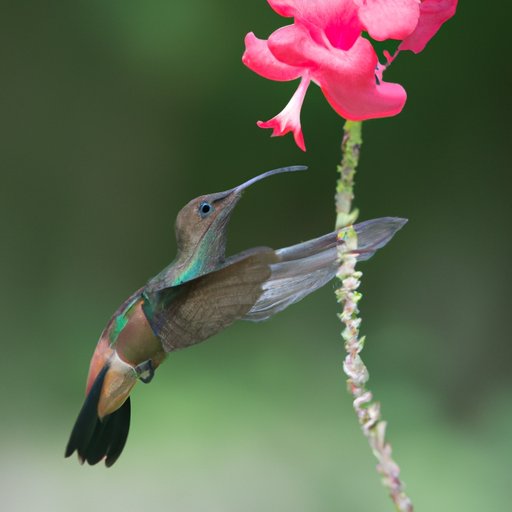I. Introduction
Hummingbirds are a fascinating species of bird, known for their vibrant colors and incredible speed. However, these tiny creatures have more to offer than just their beauty; they also have unique behaviors and movements that are important to understand. In this article, we will explore when hummingbirds are most active, providing you with the knowledge you need to observe and appreciate these wonderful creatures.
II. The Secrets of Hummingbird Activity: Understanding When They’re Most Active
Before we dive into the best times to observe hummingbird activity, it’s essential to understand what hummingbird activity is and why it’s important to know. Hummingbird activity refers to their overall level of movement and energy, which can vary depending on factors like time of day, weather, and food availability. This information is essential for bird enthusiasts and scientists alike, as it can provide insight into their behavior and biology.
Hummingbirds are uniquely adapted to their environment. With the ability to fly forwards, backwards, and hover in place, they have an incredible level of agility. They are also the only bird species that can fly in all directions, making them the ultimate aerial acrobats. However, despite their speed and agility, hummingbirds are also known for their high metabolic rate. They need to consume nectar from flowers frequently to maintain their energy levels and stay active.
Factors that influence hummingbird activity include temperature, light levels, and food availability. These factors can vary depending on the time of day and the season, which is why understanding when hummingbirds are most active is important.

III. A Guide to Watching Hummingbirds: The Best Times to Observe Their Activity
Observing hummingbirds can be a rewarding experience, but it requires some preparation and knowledge. Here are some tips for watching hummingbirds:
- Choose a location with plenty of flowers and natural food sources for hummingbirds.
- Use a hummingbird feeder filled with sugar water or nectar to attract them.
- Wear clothing with natural colors, as brightly colored clothing can scare them away.
- Be patient and still, as sudden movements or noise can startle them.
When it comes to the best times to observe hummingbirds, it’s important to consider their natural patterns. Hummingbirds are most active in the morning and late afternoon, with a lull in activity during the middle of the day when temperatures are highest. They are also more active during the spring and summer months when flowers are in bloom, providing abundant nectar sources.

IV. The Science of Hummingbird Habits: Exploring the Ideal Time of Day for Observing Them
While we know that hummingbirds are most active in the morning and late afternoon, understanding the science behind their behavior patterns can help pinpoint the exact ideal time of day for observing them. Hummingbirds are diurnal, meaning they are active during the daytime, but their activity levels vary throughout the day.
Studies show that hummingbirds have a peak energy level one hour after sunrise and one hour before sunset. This is when they are most likely to visit feeders and flowers and engage in territorial behaviors. Understanding this can help bird watchers plan their observations and maximize their chances of seeing hummingbirds at their most active.

V. What You Need to Know About Hummingbird Behavior: Discovering Their Most Active Hours
Hummingbird behavior varies depending on the time of day. In the morning, they focus on feeding to replenish their energy levels after a long night of fasting. As the day progresses, they become more territorial, defending their preferred food sources and perches. During hot afternoons, they tend to be less active, seeking shade and conserving energy. They become more active again in the evening, feeding and preparing for the night ahead.
Weather and food availability are two of the most significant factors influencing hummingbird activity levels. Hot temperatures can cause hummingbirds to rest more during the day, while cooler temperatures can increase their energy levels. Droughts and reduced flower blooms can cause a decrease in food sources, leading to lower hummingbird activity levels.
VI. Unlocking the Mystery of Hummingbird Movements: A Look at Their Busiest Moments
While hummingbirds are most active during the morning and late afternoon, there are specific moments within these periods when they are at their busiest. These moments are known as “feeding frenzies,” where multiple birds converge on a food source, leading to intense competition and territorial behavior.
Feeding frenzies typically occur in the late afternoon, around 4-5 pm, when various hummingbird species are returning to their nests and need to feed before the sun sets. During this time, they may visit feeders and flowers multiple times and can become more aggressive in defending their spots.
VII. Conclusion
Hummingbirds are fascinating creatures that provide endless entertainment and wonder to bird enthusiasts. By understanding when hummingbirds are most active, we can plan our observations and appreciate their unique behavior and biology. Remember to observe hummingbirds with patience and respect, allowing them to continue their vital role as pollinators and energy sources for many ecosystems.


